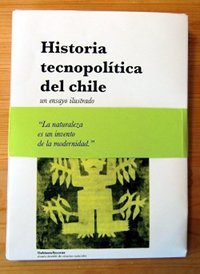Artist Isabelle Krieg and photographer Marianne Engel have connected their personal and artistic backgrounds to produce the public space installation “Animal’s Heaven” in the courtyard of the squatted cultural center AKC Metelkova. Krieg’s old car has been transformed into a delicate funeral garden populated by dried dead animals, some of them coming from Engel’s personal collection: butterflies, frogs and different kinds of insects. A mummified hedgehog lies in its grave in the truck. And the whole burial scene is surrounded by candles that slightly illuminate the location at night. “Animal’s Heaven” can be seen as a natural memorial for those creatures we often run over in our road trips, but also as an attempt to reverse the unbalanced relationship we have with the environment. While the cemetery situation symbolically brings the dead animals back to life, the car -a 23 years old black BMW that has done all the way from Zurich to Ljubljana – is probably passing by after the installation.
 The car in the courtyard of Metelkova is attracting a lot of attention. How do you feel about it?
The car in the courtyard of Metelkova is attracting a lot of attention. How do you feel about it?
Isabelle: Art in the public space is always stressful. People are attracted by this big black “macho car” and when they come closer and see the dead animals inside… they react. Some of them are adding more dead animals, bringing more flowers and taking a lot of pictures. The hedgehog is particularly popular. Initially, our idea was to look at the installation mostly as a social experiment: to leave it there and let it interact with the place and the people around. But the project has evolved and now every morning we go there to see if everything is O.K., if the animals are still there… We have decided to protect it, at least for a while. Also because there is a long story behind it.
What’s that story?
Isabelle: When we were invited to present an installation at the Festival, we immediately though of the car and the dead animals inside. But the installation was meant to be in the streets in the center of Ljubljana. What happened is that I decided to use my own car -this big black BMW- for the art work: it was very old and I couldn’t drive it legally in Switzerland without having it repaired. That was very expensive so I though Ok, let’s make a lost trip with it to Ljubljana, make the art work and leave it there. That was a few months ago, in the summer. So I parked it in the courtyard of Metelkova. But in the meantime it was vandalized: the windows were broken and the number plate stolen. That meant we could not take it to the city center, it had to stay there. At that moment, it was a big problem because we absolutely wanted to do the installation in the streets and not in a courtyard or a parking lot. We even though of giving up. But then we gave it a second though and decided to integrate the destruction in the art work. We wanted to change the bad energy of the situation and transform it into a good one, doing something extremely beautiful and fragile.
What will happen to the installation once the Festival is over?
Isabelle: There are still a lot of open questions as regards to what will happen to the art work afterwards. We will probably leave the plants and the dead animals, except for the hedgehog, we will definitely take it with us! But it is not sure what will happen to the car. I would like to have it repaired and that someone in Slovenia keeps on using it. But there are some people that seem to be interested in the tires so I don’t know… It might end up in a scrapyard, broke up and sold in pieces. Somehow this contradiction is very present in the installation: the car has been transformed into a grave and at the same time it is also dying.
 Where do the animals and the plants come from?
Where do the animals and the plants come from?
Marianne: I live in a small village in the outskirts of Zurich and I collect dead animals. My mother also does. I usually just let them dry, but the bigger ones I put them in alcohol. So most of them come from my own personal collection, except for the hedgehog: we bought it in a shop in Zurich. At the beginning we wanted to have more animals in the car but we found out that we could get into trouble by bringing animals from Switzerland to Slovenia because of the border legal restrictions. So it was clear that working with dead animals was going to be difficult.
Isabelle: We didn’t want it to look like a museum either, too morbid or kitsch. So both the story of the car and the limits with the dead animals contributed to change the initial project and define it. For the gardening, we did it ourselves. We were a bit afraid that it would like a garden art piece, we didn’t want that kind of effect at all. But thanks to the dead animals and the grave situation it doesn’t. We bought some of the plants but most of them come from the nature and from Zale cemetery near Ljubljana. Here people seem to take a lot of care of the graves, they bring flowers and plants, so we looked into the rubbish containers in the cemetery where people throw away old plants and candles and we collected them for the installation. And now we also go there everyday to take care of them.
Photos: by Nada Zgank.



